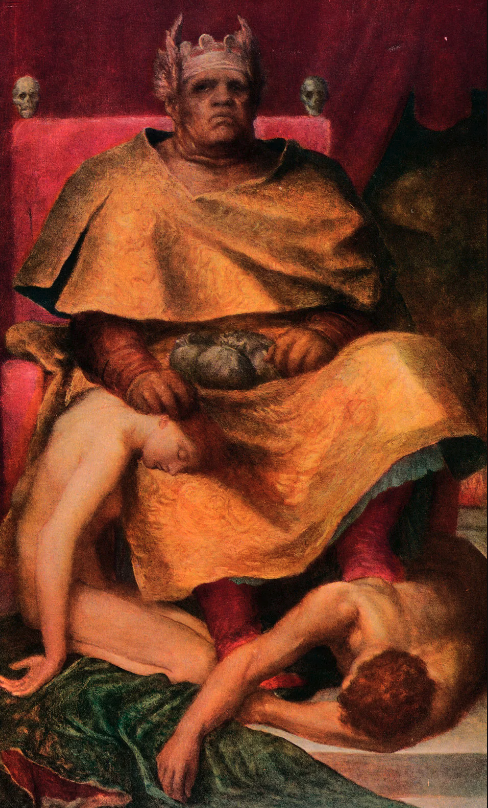Difference between revisions of "Template:POTD protected"
Occultwiki (talk | contribs) |
Occultwiki (talk | contribs) |
||
| Line 1: | Line 1: | ||
{| role="presentation" style="margin:0 3px 3px; width:100%; text-align:left; background-color:transparent; border-collapse: collapse; " | {| role="presentation" style="margin:0 3px 3px; width:100%; text-align:left; background-color:transparent; border-collapse: collapse; " | ||
|style="padding:0 0.9em 0 0;" | [[File: | |style="padding:0 0.9em 0 0;" | [[File:Mammon Demon.png|300px|thumb|]] | ||
|style="padding:0 6px 0 0"| | |style="padding:0 6px 0 0"| | ||
'''[[Mammon]]''' in the New Testament of the [[Bible]] is commonly thought to mean money, material wealth, or any entity that promises wealth, and is associated with the greedy pursuit of gain. The Gospel of Matthew and the Gospel of Luke both quote [[Jesus Christ]] using the word in a phrase often rendered in English as "You cannot serve both [[Yahweh|God]] and mammon." | |||
In the Middle Ages, it was often personified and sometimes included in the [[hierarchy of Hell]]. Mammon in Hebrew (ממון) means "money". The word was adopted to modern Hebrew to mean wealth. Gregory of Nyssa asserted that Mammon was another name for [[Beelzebub]]. In the 4th century Cyprian and Jerome relate Mammon to greed and greed as an evil master that enslaves, and John Chrysostom even personifies Mammon as greed. Descriptions of Mammon closely resemble those of [[Lucifuge Rofocale]] as a demon who delivers wealth in ''[[The Grand Grimoire]]''. | |||
<p><small> | <p><small>Artist: George Frederick Watts</small></p> | ||
[[:Category:Images|'''(More Images)''']] | [[:Category:Images|'''(More Images)''']] | ||
<div class="potd-recent" style="text-align:right;"> | <div class="potd-recent" style="text-align:right;"> | ||
Revision as of 05:36, 19 September 2023
|
Mammon in the New Testament of the Bible is commonly thought to mean money, material wealth, or any entity that promises wealth, and is associated with the greedy pursuit of gain. The Gospel of Matthew and the Gospel of Luke both quote Jesus Christ using the word in a phrase often rendered in English as "You cannot serve both God and mammon." In the Middle Ages, it was often personified and sometimes included in the hierarchy of Hell. Mammon in Hebrew (ממון) means "money". The word was adopted to modern Hebrew to mean wealth. Gregory of Nyssa asserted that Mammon was another name for Beelzebub. In the 4th century Cyprian and Jerome relate Mammon to greed and greed as an evil master that enslaves, and John Chrysostom even personifies Mammon as greed. Descriptions of Mammon closely resemble those of Lucifuge Rofocale as a demon who delivers wealth in The Grand Grimoire.
Artist: George Frederick Watts |
